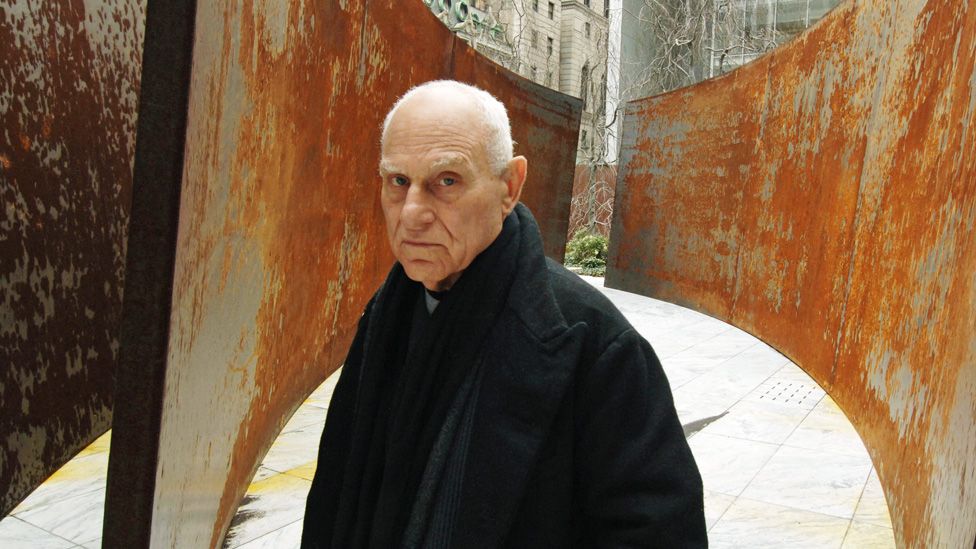ARTICLE AD BOX
 Image source, Getty Images
Image source, Getty Images
Richard Serra in one of his sculptures at Museum of Modern Art Sculpture Garden in New York in 2007
By Ian Youngs
Entertainment & arts reporter
Richard Serra, a giant of US art whose monumental steel sculptures have appeared around the world over the past 50 years, has died at the age of 85.
Nicknamed the "poet of iron", Serra is credited with reinventing sculpture by placing simple but huge arrangements of upright slabs and shapes in the ground.
People can walk around and between his looming and leaning metal sheets, often on a street or in the landscape.
His rusting works are in cities including London, Berlin and New York.
For visitors, walking inside his sculptures could evoke a range of sensations, from inner peace to physical oppression.
"They sometimes induce vertigo. But they're also remarkably liberating," Washington Post art critic Sebastian Smee wrote.
"You can come out of them with feelings of secret and victorious expansion, as if you were Theseus after slaying the Minotaur."
Image source, Getty Images
Image caption,Visitors can walk between and around Serra's metal sheets
Serra was born in San Francisco, where he would see the giant steel shapes of the hulls at the shipyard where his father worked.
Serra himself worked in a steel mill to help pay for his education, studying fine art at Yale, but he originally set out to be a painter.
He switched to sculpture when he realised that it was more interesting to have the viewer as part of the artwork itself.
Image source, Getty Images
Image caption,Serra adjusting another of his works in Paris in 2008
Becoming part of the underground New York art scene in the 1960s, he and artistic friends like composers Philip Glass and Steve Reich funded their work by forming a removals company - Low Rate Movers - and shifting furniture part-time.
Serra's artistic reputation grew, as did the scale of his creations. However, that came with tragedy and controversy.
In 1971, a worker who was installing a Serra sculpture in Minneapolis was fatally crushed when a two-tonne steel plate fell on him. In 1988, a labourer lost a leg when an artwork collapsed as they were dismantling it in New York.
Several years earlier, a major installation in the city's Federal Plaza was at the centre of a high-profile dispute, when a judge led a campaign to have the 120ft (36.5m) curved, leaning steel wall removed.
Image source, Getty Images
Image caption,Tilted Arc was unpopular with some in New York in the 1980s
At a public hearing, Tilted Arc was lambasted as "garbage", "hideous", "an irritant", "a calculated offence" and "scrap iron" - and a jury that had been chosen to settle the matter voted for its removal.
Serra himself could be outspoken and uncompromising, and was described as "not a man of moderate opinions" in a 1989 New York Times profile under the headline, "Our most notorious sculptor".
His imposing works continued to be erected in locations including the entrance to Liverpool Street station in London, Toronto Pearson Airport, the Guggenheim Museum in Bilbao, and the Qatari desert.
The cause of death was pneumonia, his lawyer told the New York Times. The paper also reported that he had been diagnosed with cancer of the tear duct several years ago but had declined surgery to remove the eye.

 1 year ago
56
1 year ago
56








 English (US) ·
English (US) ·